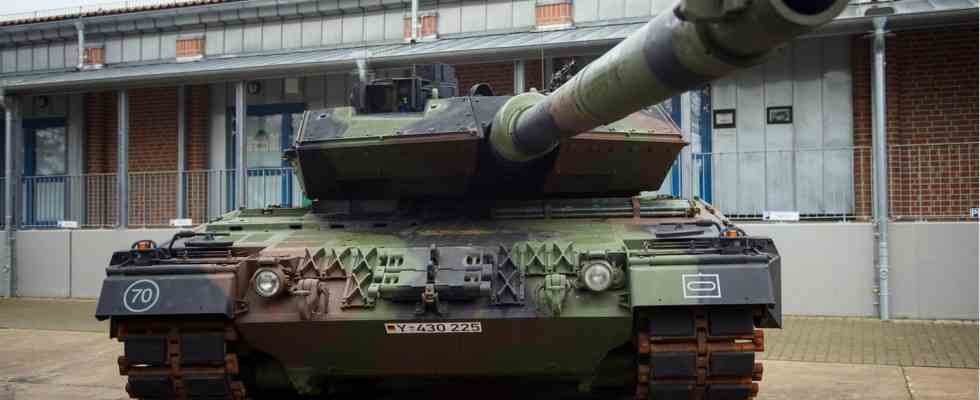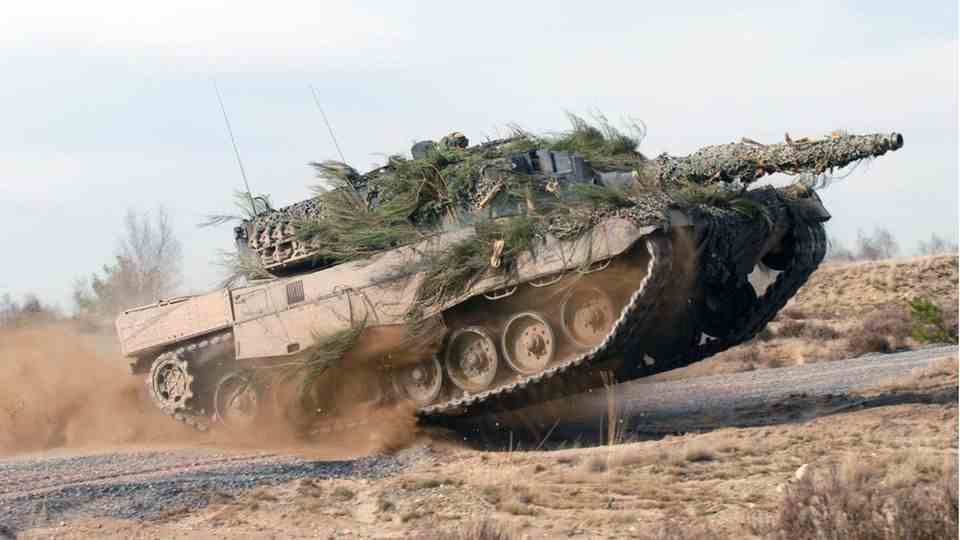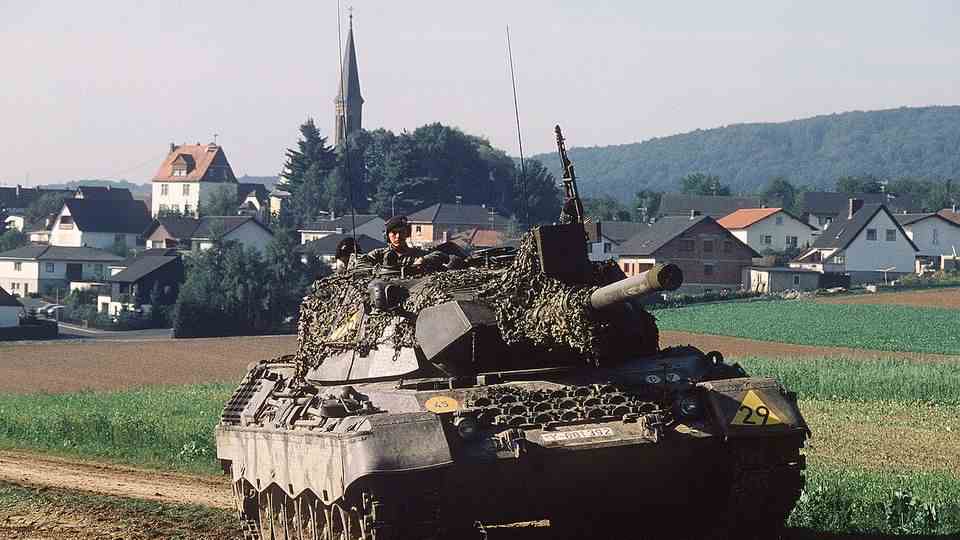The first combat and armored personnel carriers from Germany have arrived in the Ukraine. They can only win if Kiev clears the airspace over the battlefield.
They’re finally here. German Leopard 2 main battle tanks and Marder armored personnel carriers were handed over to Ukraine. And not only the vehicles, the package should also contain a set of spare parts and ammunition. Plus trained teams.
It took a long time. Strictly speaking, it took a long time for Kiev to wait for a commitment from Berlin, after which it went as quickly as possible. Behind this is a change in the Berlin line and the person of Defense Minister Pistorius. If Kiev wants to thank someone, the right address would be the defense minister.
But what can these vehicles achieve? The answer has two parts. First of all, it will be about the more technical combat value of the vehicles. then around the bigger picture of the situation in Ukraine.
Marder and Leopard 2 are up to the dangers
Both combat vehicles have already been presented in more detail here. The Leopard 2 is undoubtedly one of the best main battle tanks in the world. Compared to the other two Western models – Challenger 2 and Abrams M1 – it is the lightweight. Although it’s also more likely to be overweight than underweight, the Leopard 2 has a better horsepower-to-weight ratio and is still very agile. It remains to be seen how he will cope with the special conditions of the muddy periods in Ukraine. In some places, the ground is so soft that no military vehicles can drive off the beaten track. The Leopard 2 will have to fit into these extreme situations. Basically, the T-models are all lighter.
The T-72 weighs about 20 tons less than the Leopard 2. It has a lower level of protection, but is more agile in terms of bridge carrying capacity.
Crew Survival
The Leopard 2’s primary weapon, the 120mm smoothbore cannon, is a match for any opponent on the battlefield. The modern T90’s frontal armor alone can give it trouble. One of the lesser-known advantages of the Leopard 2 is the high depression angle of the gun. The Leopard can aim up and down more than other tanks. This is important in covered positions and it helps to compensate for uneven ground.
In addition, the Leopard 2 can drive quite well in reverse. That sounds marginal, but it isn’t. This sets it apart from the standard Russian T-72 tank, which has severely limited rear vision and can barely surpass pedestrian cruising speed in reverse mode. The Leopard 2 was designed to deploy in the enemy’s area of effect without having to turn around and show the enemy the weaker armored side or rear view. The leopard can back away while showing its forehead at the opponent. When fighting in urban terrain, which is already unfavorable for main battle tanks, there is also the fact that the monsters sometimes have no room to turn and are therefore dependent on reverse gear.
The Leopard 2 can also be quickly repaired in field conditions. It is questionable whether this will come to fruition in Ukraine. It is quite possible that defective tanks will be taken abroad and repaired there by personnel from NATO countries.
Then the protection of the crew has a much higher priority than in the T-models of the Russians. Until the T-14 Armata, crew survival was secondary to Moscow. With the Leopard 2, on the other hand, the mine protection in the newer models has been continuously improved. In addition, there are sophisticated bulkheads and “predetermined breaking points” for the ammunition chambers. This is to ensure that, in the event of an internal explosion, the force is deflected from the crew’s combat compartment. Such features do not offer a 100% guarantee, but in the Leopard 2 – as in the other two western tanks – the crew has a higher chance of surviving even after a heavy hit, even if the tank is lost. In addition to the human benefit, this is also a military value. A trained crew is not lost and can continue fighting in another tank.
An older semester
The Marder armored personnel carrier, on the other hand, is no longer “top of the game” and falls behind the newer models. It certainly does not need to hide in comparison to other models of infantry fighting vehicles and armored personnel carriers deployed in Ukraine. Its 20mm MK 20 RH 202 autocannon provides significant firepower for infantry support. If the infantry squad is equipped with anti-tank guided missiles, the Marder group can also defend itself against main battle tanks. Vehicles such as the Soviet BMP-2 can be used as a comparison. However, it is less protected, but more heavily armed and significantly lighter.
The number decides the role
However, one should not expect miracles from either type, due to their small number and the peculiarities of warfare in Ukraine. Only 18 Leopard 2s have come from Germany so far, 40 have been promised – but there will be far more western main battle tanks overall. But one shouldn’t forget the front line of over 1000 kilometers. In Germany in particular, the (mis)belief in small, virtually invulnerable tank groups has had a tradition ever since the Nazis assigned the best teams to the Tiger I heavy tanks and organized them into their own units, the heavy tank battalions. In fact, these detachments could not perform miracles and, because of their small number, only temporarily and locally stabilize the collapsing fronts of the Third Reich. It turned out that the “invincible” Tiger I could be destroyed after all.
The role that the Leopard can play in conjunction with other western main battle tanks depends on how quickly and in what numbers these tanks arrive in Ukraine. Should Kiev be able to build up an operational reserve of 200-300 main battle tanks and corresponding amounts of infantry fighting vehicles and artillery, a large, space-consuming offensive can take place that will not end the war, but will give it a clear direction. If deliveries are delayed and the newcomers only make up for losses on the front lines, then the support will evaporate without Kyiv being able to create its own focus.
Severe conditions for main battle tanks
The Leopard 2 was developed in case the Cold War turns into a hot war. It was expected that large armies of tanks would collide, with the NATO tanks taking on the role of defender. It was designed for the most difficult of combats, a retreating movement combat. In the service of Ukraine, on the other hand, the Leopard 2 would have to be used primarily offensively. The battlefield in the Ukraine has so far proved to be unfavorable for main battle tanks, and the Leopard 2 will not be able to escape these general conditions either. Just a few points: the ubiquity of drones made it impossible to deploy armored troops for a push without being noticed. You must expect to be discovered and fought from afar. The same applies to broken down and damaged tanks. Dropping hand grenades will not destroy a Leopard 2, but hitting it with a kamikaze drone will. Anti-tank missiles have so far proven deadly. In the confusing battlefield, every tank must expect its less protected sides or the rear to come under fire.
An offensive will hardly come as a surprise, so battle tanks have to reckon with mine belts.
The War of the Drones
The use of main battle tanks will result in casualties. The Himars launchers operate far behind the lines, if they are quickly deployed after a salvo they have a good chance of escaping Russian return fire. A main battle tank, on the other hand, has to be close to the enemy in order to be able to fight him. This is how tanks get into the area of effect of enemy weapons. In addition, the range of artillery, drones and anti-tank guided missiles is longer than that of a chariot gun.
But despite all the dangers, Kiev will only be able to gain ground from Putin again with armored troops. The technical quality of the battle tanks will not decide on losses, victory or defeat. They will not unfold until the Ukrainian Armed Forces manage to gain air supremacy over the battlefield. To do this, Kiev’s drones would have to monitor and suppress Russian ground forces. Air defenses are fighting Russian drones and preventing Putin’s air force from flying support missions. Before the tank offensive comes the battle of the drones.




